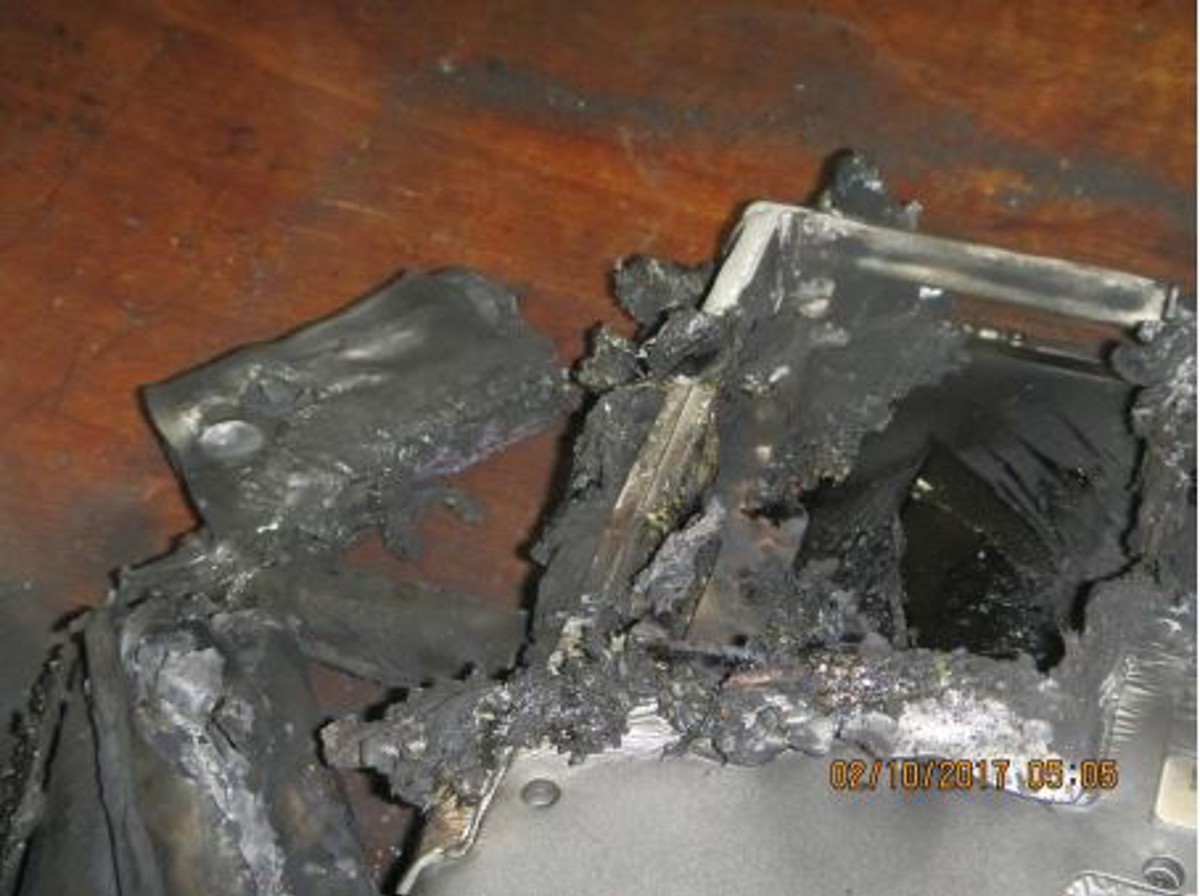Laptop battery fire
- Safety Flash
- Published on 25 October 2017
- Generated on 27 December 2025
- IMCA SF 27/17
- 2 minute read
Jump to:
A laptop battery exploded and caught fire.
What happened?
The incident happened in a workshop setting. The laptop was being used to control certain operations, which had been recently completed. The laptop itself was switched off at the time but was on charge at the mains.
The laptop was on a wooden topped work bench. A loud bang was heard from the laptop, after which it caught fire. Crew were nearby and immediately extinguished the fire by using the adjacent 3 kg CO2 extinguisher.
Owing to the quick reaction in extinguishing the fire, the vessel’s General Alarm was not activated.
Having extinguished the laptop, it was safely removed from the power source and removed to a safe location on the steel deck outside where it could cool down.
What went wrong? What were the causes?
The cause of the fire was the overheating and subsequent partial explosion of the laptop lithium-ion battery.
The last portable appliance testing (PAT) of this item had been conducted three months before.
What lessons were learnt?
- There was a quick and professional response to the fire which swiftly brought it under control before it spread.
- The laptop was in date for PAT.
What actions were taken?
- Address the issue of potential faulty laptop batteries – full asset review to establish whether desktops and laptops need replacing.
- Ensure all laptops are tested and inspected as required by PAT.
- Consider whether or not laptops should be left unattended whilst plugged in.
Related safety flashes
-
IMCA SF 16/16
27 June 2016
-
IMCA SF 16/08
30 October 2008
IMCA Safety Flashes summarise key safety matters and incidents, allowing lessons to be more easily learnt for the benefit of the entire offshore industry.
The effectiveness of the IMCA Safety Flash system depends on the industry sharing information and so avoiding repeat incidents. Incidents are classified according to IOGP's Life Saving Rules.
All information is anonymised or sanitised, as appropriate, and warnings for graphic content included where possible.
IMCA makes every effort to ensure both the accuracy and reliability of the information shared, but is not be liable for any guidance and/or recommendation and/or statement herein contained.
The information contained in this document does not fulfil or replace any individual's or Member's legal, regulatory or other duties or obligations in respect of their operations. Individuals and Members remain solely responsible for the safe, lawful and proper conduct of their operations.
Share your safety incidents with IMCA online. Sign-up to receive Safety Flashes straight to your email.

